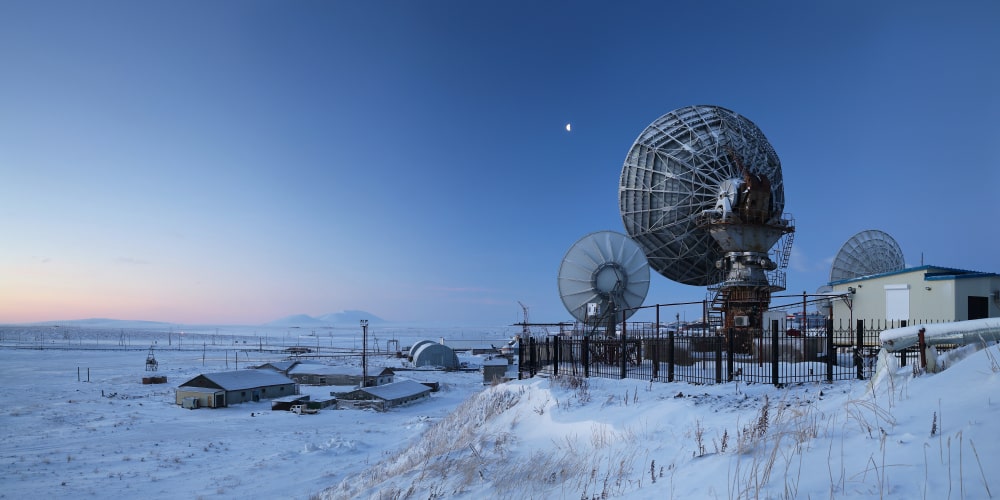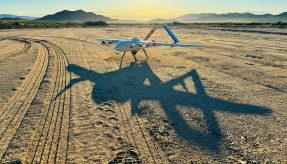
Bolstering defence and security in the High North: How connectivity is key to protecting the Earth’s Final Frontier.
The changing landscape of the Arctic is opening up significant opportunities, locally and globally. But as a frontier – and one of the last remaining on Earth – the Arctic represents a critically important region for state actors seeking to extend geopolitical influence and exploit an untapped wealth of natural resource.
The Arctic holds the key to the new environmental and economic fortunes of the world and is uniquely placed to become a global exemplar of sustainable development. However, with the fragmented array of geo-politics, standards and regulations across the region, even after the formation of the Arctic Council, this is the only marine area in the world that is not governed by a single overarching legal treaty and so capitalisation of the region’s potential is proving challenging. The barriers to sustainable development could prove critical to the 4m people living in the Arctic, but also economically and environmentally to the rest of the world.
There is a clear and urgent need for multinational frameworks, standards and regulations for sustainable development and greater transitional cooperation. Region-wide communications infrastructure would enable greater unification and integration of environmental, health and economic data, to inform sustainable development standards. If sustainable development is executed correctly, there can be a substantial overlap between industrial and social progress.
This doesn’t come without its challenges. Enforcement and monitoring of development in the Arctic is uniquely challenging because of its remoteness, limited transport links, hostile climate and lack of digital infrastructure. However, recent technological advances have made it possible to open up commercial operations in these remote locations.
With an increasing global focus on the High North, there are several reasons for its ongoing protection. Not only is the region becoming strategically important due to its natural resources, like oil, gas and minerals, but the region is a critical transit route for shipping lanes – making it a priority for global powers.
Development of the Arctic could become fundamental to maintain the world’s energy supply. The area holds some 13% of the world’s undiscovered oil and 30% of all undiscovered natural gas – and the receding ice will aid exploration and extraction. The warmer climate is also making Arctic rare-earth mineral deposits more accessible to mining than ever before. This comes at a time when demand for these minerals is growing because they form the DNA of renewable energy technology. The magnets made from rare-earth metals form critical components of wind turbines, electric vehicles, and hydroelectric power.
These natural resources have placed the Arctic at the epicentre of future clean energy production and create employment across the region – allowing for local communities to become economically self-sufficient.
The Arctic’s abundant wind and hydropower could similarly fuel a clean data revolution. The Arctic boasts reliable, local renewable energy sources and seemingly limitless access to clean and cold water, a secondary cooling source for data centres.
There are plans to build the world’s largest green data centre in the Arctic and Facebook has a hydro-powered data centre in Sweden. This offers further opportunity to create technology hubs across the Arctic, creating a wave of local start-ups – attracting skilled labour and investment whilst raising living standards across neighbouring communities.
With the Arctic rich in natural resource, the need for sustainable, controlled, responsible extraction will be key. With significant developments in reliable and robust communications this can be achieved.
NATO’s presence in the region has expanded this year with Finland joining the alliance, underscoring the need for enhanced protection. With the expansion of NATO, security concerns in the High North have increased from the threat of neighbouring adversaries. This includes issues around territorial disputes, terrorism and cyber threats. To ensure the security of the region, it is critical to have robust defence capabilities and coordinated, cross-country efforts to address these threats.
Unlocking the freedoms to operate in the High North
Armed forces from the Arctic Council Member States of Canada, Denmark, Finland, Iceland Norway, Russia, Sweden and the United States are expanding their military footprints in the region as their respective governments seek to extend levels of influence, support territorial claims and exploit valuable, hidden resources – including oil and natural gas.
However, historically the Arctic – which includes the Arctic Ocean – has proven largely inaccessible for armed forces and emergency responders, including Search and Rescue and Coast Guard, thanks in part to its remote nature, extreme topography and inclement weather.
As a result the ability to communicate across this vast and remote region has traditionally proven difficult for organisations to operate. Restrictions, until now, included a limited amount of fixed communications infrastructure, from poor connectivity to geostationary satellites stationed over the Equator, as well as unique atmospheric phenomena.
Innovation in technology and a rapidly warming local climate have unlocked the Arctic’s latent economic potential in recent years. Receding levels in ice and snow have made sea passages more accessible than ever before, providing armed forces across the High North with increased freedom to manoeuvre.
The Arctic Nations have devised concepts of operation and specialist technology to extend levels of domain and situation awareness through improved communications, intelligence, surveillance and reconnaissance (ISR); in-situ observation and resilient infrastructure.
The ability to detect threats across the Arctic’s extensive land and maritime environments is critical in understanding the most efficient means of operating across arduous and extreme terrain and deterring and responding to strategic competitor activities in the region.
Such defence and deterrence remain a critical requirement, particularly for NATO members in the Arctic as they seek to generate capacity and resilience to ensure collective security.
With NATO’s Integrated Air and Missile Defence system being situated in the High North to detect incoming missiles and aircraft to member states, from certain hostile nations, the requirement to demonstrate low latency connectivity is a crucial requirement, for NATO countries, to be able to communicate and share real-time situational awareness, seamlessly and effectively, at any given time.
Empowering connectivity for future change
To support such operations the Arctic Nations, plus its NATO allies, must rely upon mature, rapidly deployable communications and data networks – supported by robust and dynamic communications architecture with ground-based, airborne and space assets.
Critical to any military operation in the Arctic is connectivity, which can be hampered by a series of restrictions relating to the region’s remote nature and harsh climate. Priorities over the last few years have been about improving domain awareness, communication systems and the ability to conduct and sustain multi-domain operations.
Specifically, the Arctic’s extreme topography makes it difficult to lay fibre networks by terrestrial communications providers. The region’s high latitude also means armed forces can often find it problematic to use ground user terminals with Geostationary (GEO) satellites.
Armed forces also suffer from high levels in latency – a significant challenge for units seeking to maintain the tactical advantage over near peer adversaries operating throughout the region.
Atmospheric interference, from solar and magnetic events also provide challenges to armed forces by degrading high frequency signals.
Connectivity has never been so important in the High North and to overcome these areas of challenge, the DoD’s Arctic Strategy has been focussed on providing increased connectivity requirements for the armed forces. These must be supported by time-sensitive and risk-informed investments in order to better understand and build awareness throughout the region.
The focus over the last few years has been on optimisation of situational awareness through a layered approach, focused on multi-domain sensors, ranging from terrestrial radars through to space-based capabilities. The advancement of Low Earth Orbit (LEO) satellite communications, such as the one offered by OneWeb, can now enable truly resilient levels in connectivity.
The increasing strategic importance of the region, heightened security concerns, environmental and economic implications and the insurance of regional stability has meant that reliable and robust communications have never been so important in the approach towards the unlocking of the region.
Having a critical communications network in place is more than just a box to be ticked in response to a crisis – whether it be human or a natural-made disruption. It’s a necessity for future operations and potential threats across the High North and the rest of the world.
Words by Billy Bingham, Senior Director of Government at OneWeb
If you would like to join our community and read more articles like this then please click here








